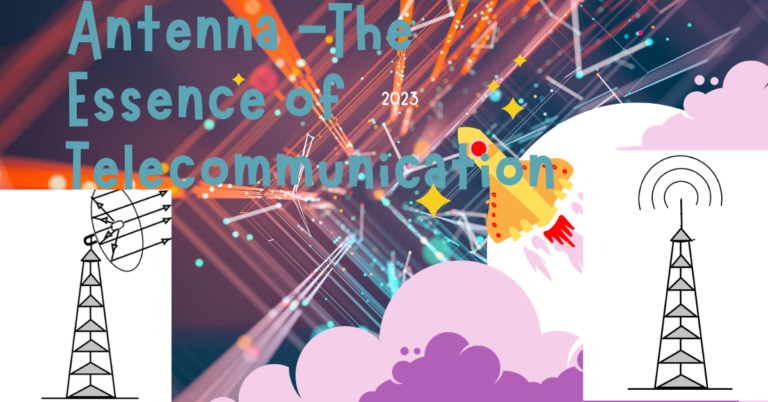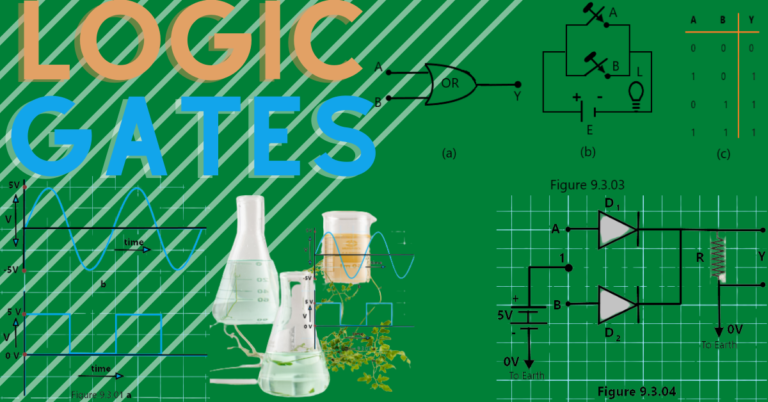Solar cells:
Solar cells are very important devices, used as the cheapest source of electric energy, particularly in the modern era with increasing demand and scarcity.
In 1883, Charles Fritts built the first solar cell He coated, the semiconductor selenium with an externally thin layer of gold to form the junctions. The device was only around 1% efficient. Modern solar cells are based on semiconductor physics.
A solar cell is a semiconductor device that converts photons of solar light into electric current. In general, a solar cell is also termed a photovoltaic cell.
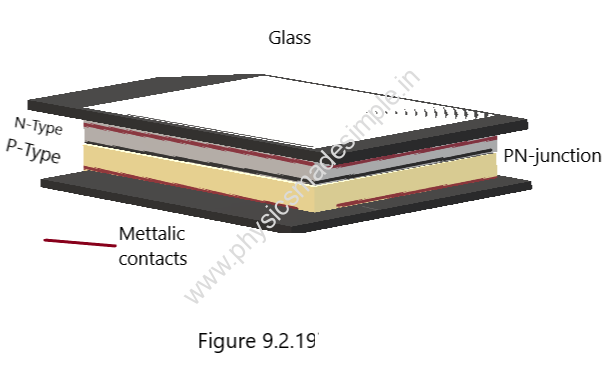
Principle:
A solar cell is based on the photovoltaic effect. Therefore, to convert light energy into electrical energy,
Construction:
A silicon PN-junction photodiode with a sizable photosensitive area makes up a solar cell in essence. Extremely thin (180 to 350 micrometers) silicon wafers or slices are used to create the junction diode. On the front side of the wafer, surface diffusion of N-type doping material is carried out after the wafers are typically mildly doped with a P-type impurity. A few hundred nanometers below the surface, this creates a PN junction. An anti-reflection substance called titanium dioxide is used to cover a cell in order to boost its capacity for light absorption. But silicon nitride has turned out to be a more effective anti-reflection coating than titanium dioxide. It stops charge carrier recombination on the surface of solar cells.
In some solar cells, the front surface is textured to improve the cell’s capacity to absorb light. Consequently, the solar cells have three layers. The solar cell’s ability to convert energy depends on its top junction layer, which is made of an N-type semiconductor, and its bottom junction layer, which is built of a P-type semiconductor. The core of the device is located in the middle layer of the cell, which is the absorber layer (PN junction).
The silicon wafer is subsequently given a complete area of metal contact on its back surface and a grid-like metal contact on its front surface using silver paste and aluminum paste, respectively. The solar cells are connected in series (or in parallel) using flat wires or metal ribbons after the metal contacts have been created, and the solar panels are then put together. According to the illustration shown above, solar panels have a polymer design cover on the back and a sheet of tempered glass on the front.
However, the use of P-N Junction diodes with many layers increases photoconversion efficiency. In order to absorb more of the solar spectrum and produce more electrical energy, each layer is made to absorb light with progressively longer wavelengths and lower energy.
Working:
Light is absorbed when it strikes the N-type layer, which is on top of the solar cell. Electrons are knocked out by the absorbed energy and then move across the PN Junction to form an electric current. The P-layer is traversed by the electric current. To store the power, load resistance is linked between the N-type and P-type layers’ metal connections. The current enters the load resistance and then returns to the N-layer. As a result, current is produced without the use of mechanical energy. A solar cell’s output is undoubtedly DC. An alternator is used to convert DC into AC so that it can power household appliances or other gadgets.
The sun’s radiation at the equator is around 1000 W m-2 at solar noon on a clear March or September day. Therefore, a solar cell with a 10% efficiency that has a surface area of 1 m2 and is exposed to full sunlight at solar noon near the equator in either March or September will be able to generate a peak power of about 100 watts.
Applications of Solar Cells:
Photovoltaics, or solar cells, are the main source of renewable energy technology that has revolutionized how we produce electricity. The photovoltaic effect, a phenomenon where light interacts with specific materials to produce an electric current, is used by these devices to directly convert solar energy into electrical energy. In this post, we will discuss the various types of uses and applications of solar cells.
Powering Voice Analysis Devices:
Devices that analyze human vocal tones could be run on solar cells. For instance, wearable technology or devices that monitor speech patterns for emotional analysis, stress detection, or mood evaluation could be powered using solar cells. These gadgets could function without the need for recharging batteries all the time by harvesting energy from ambient light.
Remote Applications:
In distant or off-grid places with limited access to stable electricity, solar-powered voice analysis devices may be useful.
Residential solar Power stations:
One of the most important applications of solar cells is in home installations. To collect solar energy and generate electricity for use in residences, these devices are installed in yards or on rooftops. Homeowners can use solar power to augment their energy demands and even sell any extra electricity back to the grid because residential solar panels are frequently connected to the grid. This not only reduces electricity costs but also helps to create a cleaner environment.
Commercial and Industrial Installations:
Solar cells are successfully used in the commercial as well as industrial sectors. Businesses and industries often have larger energy demands, which can be partially met by installing solar panels on their premises. These can be included in architectural plans as solar facades and canopies, offering both energy and shade. Solar cells help cut operational expenses and improve their business rankings too.
Off-Grid Power Generation:
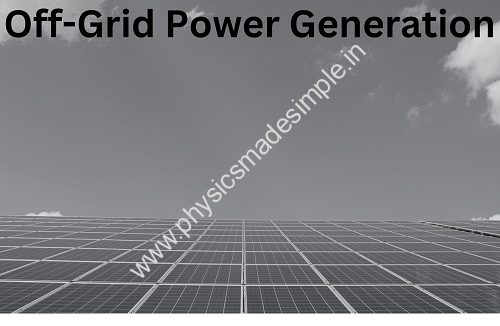
In areas with limited or no access to conventional electrical systems, solar cells have a big role to play. Rural places, distant locations, and disaster-affected areas can rely on off-grid solar systems, which are made up of solar panels, batteries, and power converters.
Portable and Mobile Devices: Solar cells are ideally suited for supplying power to portable and mobile objects due to their compact design. Solar-powered chargers are most suited and useful for outdoor activities, travel, and emergency circumstances, as they can use solar light to power cell phones, computers, tablets, and other devices. Built-in solar panels and solar-powered backpacks are the other new methodologies that enable users to charge their smartphones while on the go.
Transportation and Electric Vehicles:
Solar cells are being introduced successively into transportation systems to increase energy efficiency and reduce dependence on fossil and mineral fuels. Solar panels installed on the roofs of electric vehicles (EVs) can supplement their battery charging and extend their driving range. Solar cells are efficiently used in solar-powered charging stations for electric vehicles, which provide solar energy to fuel clean and sustainable transportation systems.
Space Applications:
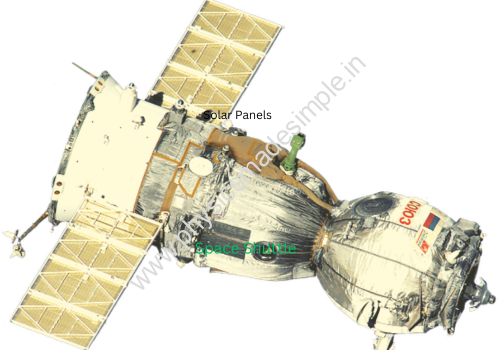
For many decades, solar cells have been an integral component of space exploration. Spacecraft and satellites use solar panels to generate electricity from the Sun’s rays in the vacuum of space. The systems and instruments on board are powered continuously with these solar panels, allowing for in-space communication, data collection, and scientific research.
Utility-Scale Solar Farms:
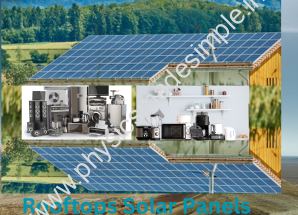
Utility-scale solar farms, which collectively produce vast amounts of electricity, are made up of substantial arrays of solar panels. Numerous houses and businesses can be powered with the help of these farms, which are frequently located in places with abundant sunlight. In order to decrease the use of conventional energy sources and greenhouse gas emissions, these installations generate electricity that is added to the grid.
Desalination and Water Treatment:
Solar energy is used to power the desalination process in solar-powered desalination facilities, turning salt and other impurities out of salt water to create fresh water. This application is quite capable of overcoming water scarcity in locations with enough sunlight but few freshwater resources.
Agriculture and Irrigation: A sustainable alternative pump that draws water from wells or other sources can be run with the help of solar panels to offer reliable and efficient irrigation for crops. In remote or farming communities with patchy access to energy, this is very useful for agriculture and is provided with the help of solar-powered irrigation systems.
Microgrids and Energy Access:
Microgrids are localized energy distribution networks that can operate independently or in conjunction with the main grid. When building microgrids in places with patchy grid connectivity, solar cells are essential.
The way we generate and utilize energy is changing thanks to solar cells, which can now power solitary devices as well as remote villages. As technology develops, solar cells are surely going to become much more effective, more widely available, and more incorporated into our daily lives.
Types of solar cells:
Amazing devices based on the technology called solar cells use sunlight’s energy to generate electricity. There are various types of solar cells, each with its own special qualities and benefits. Let’s explore them in an approachable manner:
Monocrystalline Solar Cells:
The Superstars: In the realm of solar energy, monocrystalline solar cells are comparable to the best athletes. They are extremely effective at turning sunlight into electricity since they are formed from a single crystal structure. They are therefore a well-liked option for rooftop installations with limited area.
Polycrystalline Solar Cells:
The Economical Alternative: Polycrystalline solar cells are renowned for their low cost. They are marginally less effective than monocrystalline cells because they are composed of several smaller crystals. They are a great choice for families with little funds who nevertheless want to benefit from solar electricity.
Thin-Film Solar Cells:
The Flexible Innovators: Thin-film solar cells are a bit different. They are not made from traditional crystalline materials but from thin layers of semiconductor materials. Because of their flexibility and lightweight, these cells can be incorporated into construction materials or employed in novel ways, such as solar tiles.
Amorphous Silicon Solar Cells:
Thin-film cells, of which amorphous silicon solar cells are a subset, are among the competitors due to their adaptability. Due to their adaptability and ability to function effectively even in small electrical devices, they are well known for their versatility.
Organic Solar Cells:
Environmentally Friendly Innovations: Organic materials, such as carbon-based polymers, are used to create organic solar cells. Although they are still in the research stage, they show promise for developing solar technology in the future because of their flexibility, lightweight, and potential for low-cost manufacture.
Bifacial Solar Cells:
The Double-Sided Champions: Bifacial solar cells can capture sunlight from both the front and rear sides. They are frequently employed in industrial and utility-scale systems where sunlight can be reflected by reflecting materials, such as snow, water, or other surfaces, to produce more energy.
Cadmium Telluride (CdTe) Solar Cells:
The Thin-Film Heavy Hitters: CdTe solar cells are another type of thin-film technology. They are renowned for being economical and, as a result of their capability to produce electricity effectively, are frequently employed in large-scale solar power facilities.
Copper Indium Gallium Selenide (CIGS) Solar Cells:
The Thin-Film Innovators: CIGS solar cells are thin-film devices that provide a fair trade-off between cost and efficiency. There has been interest in their potential for flexible and lightweight solar applications.
Every form of solar cell has a particular set of advantages and is best suited for a range of applications. When choosing the ideal solar cell for your needs, efficiency, cost, and the specific application are key factors to take into account. Keep an eye out for new innovations as solar technology continues to advance, because the future of solar energy is looking better than ever!

